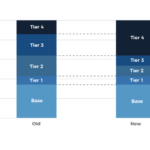 Welcome, everyone! Welcome to the 49th episode of the Financial Advisor Success Podcast!
Welcome, everyone! Welcome to the 49th episode of the Financial Advisor Success Podcast!
My guest on today's podcast is Anna Sergunina. Anna is the owner of MainStreet Financial Planning, an hourly-based financial planning firm founded under the Garrett Planning Network that has grown to more than $600,000 of revenue, all from simply getting paid to provide hourly financial planning advice (with no income from insurance products or managing investment portfolios at all).
What's fascinating about Anna's business, though, is the way that she's figured out how to communicate the value of hourly financial planning – by creating very specific financial advice packages for various types of prospective client profiles – and then using her website to both explain the value of financial planning packages to prospects, and to screen out those who aren't really likely to take the process seriously.
In this episode, we talk in depth about Anna's 5-meeting process for financial planning, why she charges $100 as an upfront deposit just to have an Initial Inquiry approach meeting with prospects, the way she focuses first on the client's spending to help them understand what they can save and what kinds of goals might be possible, and then proceeds to an interactive financial planning session using MoneyGuidePro, all of which leads up to a final meeting where she ultimately presents financial planning recommendations and then helps clients to implement them.
We also talk about how Anna sets the level for her financial planning fees, the sources of new business that has her firm on track to add more than 100 new financial planning clients this year, the way she re-engages existing clients for ongoing financial planning updates to generate a level of recurring revenue, and why and how she built extensive workflows in her Wealthbox CRM to manage the financial planning logistics with her ever-growing 6-person team.
And be certain to listen to the end, where Anna shares her own path into the industry, how she actually bought out MainStreet Financial Planning from its original founder, the way she's decided to structure her week with some days dedicated to working in the business and others solely for working on the business, and why she thinks it's so crucial that even fiduciary financial planners learn how to sell. Because you can't get paid for your knowledge and expertise until you can sell someone on its value and why they should pay you.
So whether you have been trying to figure out how to better communicate your financial planning services, have been contemplating providing hourly services and wanting to know how to do it successfully, or are interested in more effectively using CRM to manage workflows, I hope you enjoy this episode of the Financial Advisor Success podcast!









 Welcome, everyone! Welcome to the 48th episode of the Financial Advisor Success Podcast!
Welcome, everyone! Welcome to the 48th episode of the Financial Advisor Success Podcast!
